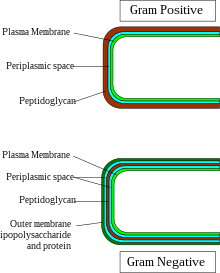Gram-negative Bacteria Facts for Kids
Gram-negative bacteria are a type of bacteria that do not retain crystal violet dye during Gram staining, appearing red or pink and playing important roles in health and disease.
View Article For:

Related Articles
Introduction
They won’t hold onto a purple dye called crystal violet when scientists try to color them. Instead, they usually turn pink. These bacteria can be found everywhere - in soil, water, and even inside our bodies! 🌊🏡 They play important roles but can also sometimes make us sick. Scientists use special tests to study these little creatures and learn how they behave. Understanding Gram-negative bacteria helps doctors find the right medicine when someone gets an infection. 🏥
Pathogenic Gram-negative Bacteria
Some Gram-negative bacteria are known for causing infections. For example, Neisseria gonorrhoeae can lead to a disease called gonorrhea, while Klebsiella can cause lung infections. 🫁
Some types of E. coli can cause food poisoning. It's important to wash our hands and cook food properly to avoid these bacteria! 🧼🍽️ Pathogenic Gram-negative bacteria can be tricky because they can hide from medicines, so scientists have to work hard to find ways to fight them.
Current Research And Future Directions
They are studying how these bacteria interact with antibiotics and how they can become resistant. New research aims to discover ways to find and destroy superbugs. 🦠
They are also looking into the roles that Gram-negative bacteria play in our gut health and the environment. 🌍
Scientists hope that by learning more, they can create new treatments and ways to keep everyone healthy. The future in the battle against bad bacteria is bright, and every researcher plays an important part! 🌟
Major Genera Of Gram-negative Bacteria
Some well-known genera include Escherichia (like E. coli), Salmonella, and Pseudomonas. E. coli usually lives in our intestines and helps with digestion. 🤗
However, some types can cause tummy trouble! Salmonella is often linked to food poisoning, which can happen if we eat undercooked chicken or eggs. 🍗🥚 Pseudomonas is found in soil and water, and some types can be really tough, surviving even in hospitals! These genera are important in studying health and science! 🔍
Characteristics Of Gram-negative Bacteria
This wall is covered by a protective outer layer. This layer helps them survive in tough environments like oceans and dirt. 🌍
These bacteria can also grow in places with little oxygen! Some can even produce toxins that hurt us, while others are friendly and help break down waste. 🗑
️ Some well-known Gram-negative bacteria include E. coli and Salmonella, which helps scientists learn more about how these little bugs behave.
Gram-negative Bacteria In The Environment
They are super important for our environment. Some help break down dead plants and animals, which returns nutrients to the soil. 🍂🌿 Others can help plants grow by making nitrogen available, which is important for plant nutrition. 🌱
In oceans, some Gram-negative bacteria break down waste, keeping our waters clean! 🌊
They also help recycle materials so that nature can keep going! Understanding their role helps scientists protect our planet and keep ecosystems healthy. 🌎
It's like a teamwork challenge in nature!
Methods For Identifying Gram-negative Bacteria
Scientists also use other advanced tools like DNA sequencing and different biochemical tests to learn more about these bacteria. 💻🔬 These tests help tell which bacteria cause infections, which helps doctors choose the right medicine to treat us. Each method is like solving a bacteria mystery! 🕵
️♂️
Role Of Gram-negative Bacteria In Human Health
Some are actually good for us! For example, certain strains of E. coli help with digestion in our intestines. They work alongside good gut bacteria to keep our stomachs happy! 🍏🥦 Gram-negative bacteria also help produce vitamins that we need to stay healthy. Plus, they can help fight off dangerous pathogens, acting as our body’s defenders. 🛡
️ Learning more about these friendly bacteria helps scientists develop better treatments and improve our health overall. It's like having tiny superheroes in our bellies!
Antibiotic Resistance In Gram-negative Bacteria
Antibiotic resistance happens when Gram-negative bacteria learn to survive against antibiotics that usually kill them. This is a big problem because it makes infections harder to treat. When antibiotics are used too much or incorrectly, it gives bacteria chances to change and resist. 💊
Scientists are studying this to find new ways to fight resistant bacteria. Protecting antibiotics and using them wisely helps keep us safe! 📚
It's like a superhero battle: we need our antibiotics to win against sneaky, resistant bacteria!
Differences Between Gram-positive And Gram-negative Bacteria
👩👦 Gram-positive bacteria hold on to the purple dye during testing, making them look violet, while Gram-negative ones look pink. The main difference is in their cell walls. Gram-positive bacteria have a thick wall, while Gram-negative bacteria have a thin wall covered with an extra layer. Also, Gram-negative bacteria are usually more resistant to antibiotics, which are medicines that fight bacteria. ⚔
️ Knowing these differences helps doctors figure out which kind of bacteria is causing sickness and how to treat it properly!
DIY is a humongous library of
activities and courses for kids.
Curious?
Gallery of
Did you know?
🔬 Gram-negative bacteria are too small to see without a microscope!
🌊 They usually turn pink when scientists try to dye them with crystal violet.
🏡 Gram-negative bacteria can be found in soil, water, and even inside our bodies!
🧱 They have a thin wall made of peptidoglycan with an extra protective layer.
🌍 These bacteria can survive in tough environments like oceans and dirt!
🚫 Some Gram-negative bacteria can produce toxins that make us sick.
👨👩👦 They are different from Gram-positive bacteria, which turn violet in tests.
⚔️ Gram-negative bacteria are usually more resistant to antibiotics.
😊 Some strains, like E. coli, are friendly and help with digestion.
🌎 They play important roles in the environment, helping to recycle nutrients.





